
1, You travel a lot in china. Which city or town you like most?Why?(I mean the scene is good) And where is your next destination?
Personally, I very much enjoy traveling to the west of China. I do not have a particular city which is a favourite but I think Qinghai and Xinjiang are by far my favourite provinces and I take every opportunity I can to travel there. There is something about these provinces that makes them very distinct from the rest of the country. The people, religion, architecture and landscapes all seem to conspire to make this on of the most photogenic places. They are quite mysterious to me which makes me want to explore them more and document life and issues there.
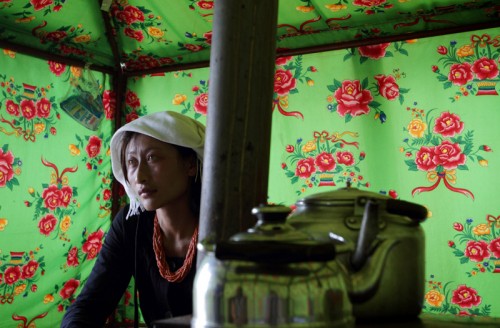
2,Your major in college is Zoology, now your photo focus on the environment, seems you have turned back. What is your feeling about this circle? How is your understood of photography then and now.
My interest in environmental issues comes from my time at University. It was during this time that I visited the Atlantic Rainforest of Brazil, just outside Rio de Janeiro, as part of my studies. I was just discovering photography at this point, and I found it to be a wonderful tool to document many of the issues affecting the area, including deforestation and habitat destruction. From this point, I decided that I would use photography to help me convey my concerns about the environment.
I believe it is quite important for photographers to have a background that is not necessarily in photography. I would advise those starting out to study subjects which interest them and use that as their photographic focus. I photograph environmental issues because I am genuinely interested in the sciences, biology, climate and related issues. Photography is an extension of those interests and a vehicle by which I can express my concerns. It’s my goal to help people understand these issues and make them more clear. I can do this better because I studied many of these issues beforehand.
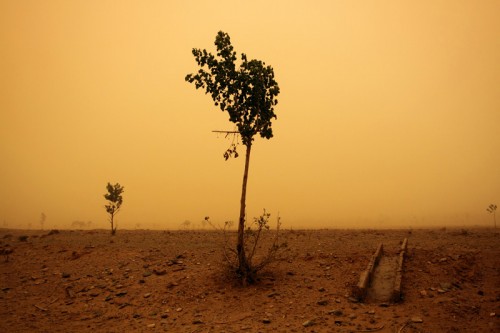
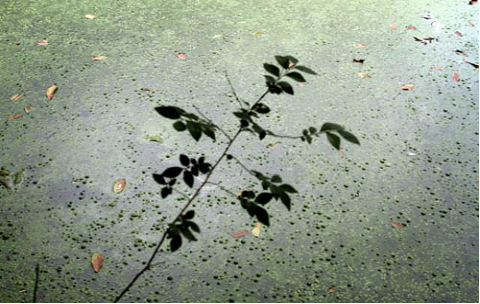
3, Compare with the developing country what is the key problem of China’s environment issue in your opinion?
I think water is the key issue for China now. Most of my work so far in China has focused on increasing desertification and the plight of disappearing wetlands. During this coverage, I have traveled to most parts of China telling small stories from local communities about the challenges they are facing associated with water. The systemic issue amongst all these stories however is access. I think the way in which China handles its water resources is going to be the key factor in determining China’s development over the coming decades

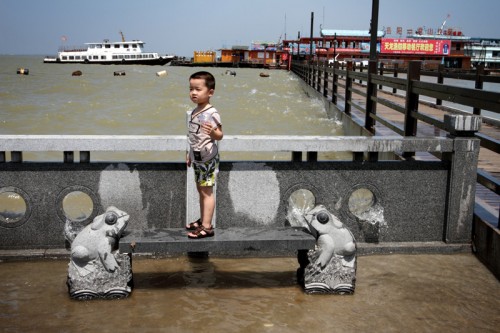
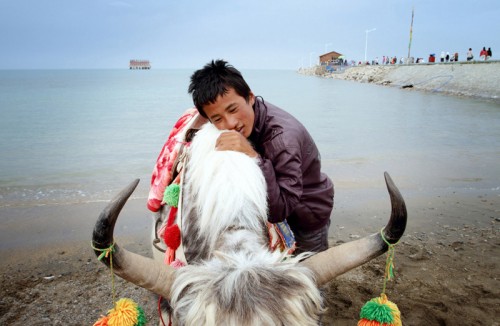
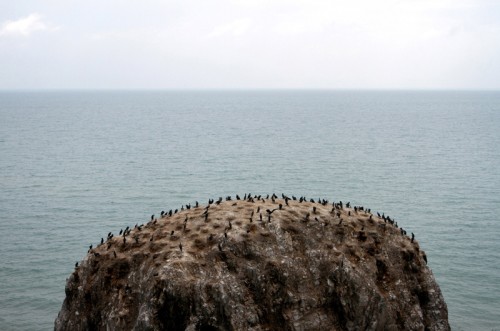
4, Do you agree with the comment that some photographers they just make “the environment disaster porn” to please or astonish the eye of the audience. In which way a photographer can tell the story and even make people take action by the picture.
Well, I find that this term is more commonly used when talking about war photography. The justification is, that if you are able to create aesthetically pleasing images, then you are able to grab the attention of the viewers better. I remember the first time I looked at the book Inferno, by James Nachtwey. It is a harrowing book of many of the late 20th Century’s worst conflicts. I struggled to come to terms with the graphic subject matter photographed in such an aesthetically pleasing way. Something felt wrong in appreciating it. Those images however still sit with me and I can’t forget them. That’s important. We photograph, to remember.
Although my subject matter is not as extreme, it holds importance in a different way and I have had similar comments from viewers of my images who struggle with their feelings when looking at my images. I think as photographers, we have a duty to make the best images that we can in any given situation. If I create bad images, no-one will remember them. We have to grab the attention of our audiences. If we don’t, how can we hope to get people’s attention and change attitudes? I want people to feel something when they look at my images. I want them to feel this conflict in emotions. I want people to think deeply about the issue. Only when they do this, will there attitudes perhaps change, or spur them into action.
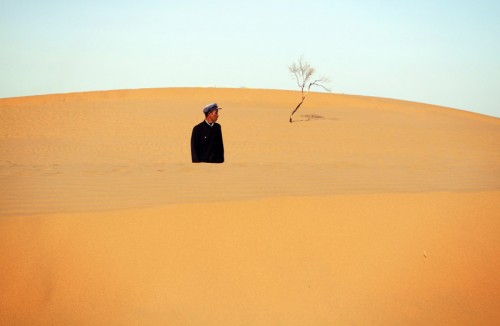
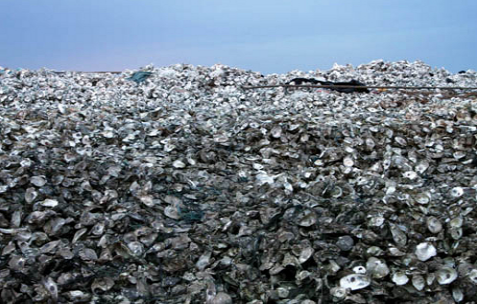
5, Do you still believe that a photo can be an evidence?
A photograph is a single piece of evidence. However it is a subjective moment caught by one individual at one moment in time. On its own, it does not stand for much. The power of photojournalism lies in story-telling, using multiple images, or now in a more modern era of photojournalism, including text, video and multimedia.
The photo-essay is a collection of pieces of evidence, witnessed by the photographer. The power lies in the way the images are collated and sequenced. The more evidence that is gathered, the more reliability that the story holds for the viewer.
I think that viewers of a photograph or photo-essay should never count that work as the definitive opinion on any given subject. They need to look at the work of other photographers on the subject. Does the evidence all point in the same direction? Is it conflicting? Is it collaborated by other evidence outside the view of photography? All these factors determine the validity of any given opinion implied or asserted by a single image or photo-essay.
6, You have got the travel grant from The Pulitzer Center on Crisis Reporting for two years. That is the award for journalism report not just for photography. Do you think it is difficult for a photographer to do both photo and word report. How you balance yourself between these two media.
Before I was awarded the two grants from the Pulitzer Center on Crisis Reporting, I had not written very much, as I was always focused more on the visual side of storytelling.
The Pulitzer Center however required that I produce not just images but also extensive text to go along with my images. I was required to start a blog, write updates and tell the stories through words as well as images.
Although difficult to begin with, I believe this has made me a better photographer and storyteller. It has made me focus on different ways to tell a story and incorporate different ways to tell a narrative. Now, I am quite comfortable with this process and feel it has made my reporting better.
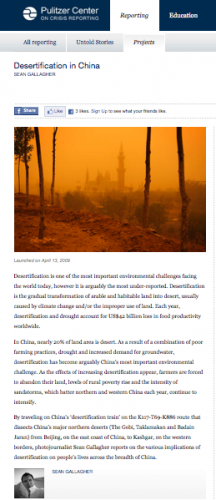
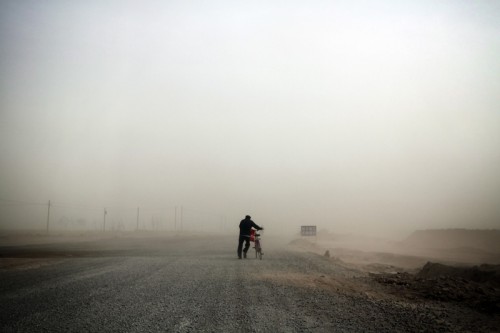


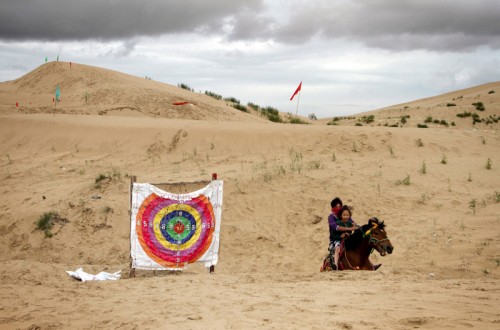
7, You do multimedia also. What is your thought about this kind of new media? Can you get money for doing this?
I have been very keen to embrace multimedia as a new way to tell my stories. Multimedia offers many new avenues of distribution for my work and I feel it has been key in my development as a storyteller of environmental issues.
It is able to offer viewers a new experience and different point of view than a photo-essay alone. By using narration, interviews and music stories are able to gain a new power and increase their effectiveness in reaching audiences in a new way.
I have found that clients are now increasingly approaching me to produce multimedia work. They like to possibilities that are offered to their readers to view the stories on different platforms i.e. in print, online, television, via iPad etc.`
8, As a young emerging photographer you have successfully got some support from grant and foundation. Can you share some of your experience with us? how you make a living as a freelance photographer?
I think the key to finding funding is to find an organization that matches you and your work. If you are able to identify a funding body that works closely on your subject matter or geographical location, you are more likely to receive funding from them.
I would also advise to be prepared for the fact that applications can take a long time and often you will not be chosen to receive funding. This can be disheartening however you must keep focused and adapt your applications to make them have the most impact. Persistence is key and you should not give up easily. There is always some way to find funding for a worthy project.
Starting out as photographer is difficult. At no other time in history have there been more photographers, with thousands of amateurs also taking pictures with affordable professional cameras. I believe the key to success, as a professional, is to find your niche and having the ability to create new ways of presenting your work.
Identify what subject matter or geographical location you are interested in and focus on it. Find new and interesting ways to tell stories about subjects you are passionate about. If you are able to do this, people will notice and you will be able to establish yourself. Be prepared that it will take time. To have photography as your profession, you must be very driven, determined and have a self-belief in the importance of your work.
9, pls recommend some books to us
The book that had the biggest influence on me from a photojournalistic perspective was Vietnam Inc. by Magnum photographer Philip Jones Grifiths. I was lucky enough to get to know Philip during my time as an intern at Magnum. Philip’s work and himself as a person had a deep impact on me. Many regard his work in Vietnam as helping change public opinion about the war. It’s a beautiful and graphic document of war and is essential reading for anyone interested in classic photojournalism.
The other book that deeply influenced me was ‘Color Photography” by Ernst Haas. It’s a dreamlike book of color which grips you and immerses you in a world of details, patterns and emotion. Haas was one of the first photographers to explore the potential of color photography and he brought his images alive by his attention to composition, patterns and structure within the most ordinary of subjects. His photography made me see the world differently.
Pingback: Monday 27 June 2011
Pingback: tandblekninng med laser